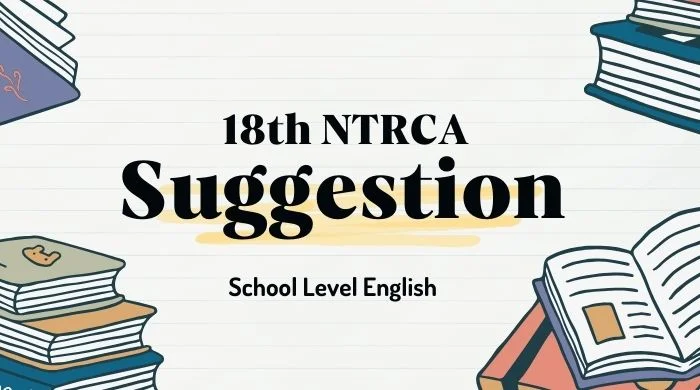আজকের আলোচনায় Gerund and Participle Exercises এবং perfect participle, verbal noun ইংরেজি Grammar এর একটি confusing chapter যা আমরা খুব সহজে উপস্থাপন করার চেষ্টা করব।
Gerund and participle exercises meaning or definition of gerund
Verb এর সাথে ing যুক্ত হয়ে noun হিসাবে ব্যবহত হলে তাকে gerund বলে।
Gerund Examples: Reading is an excellent habit.
The old man is tired of walking. ( here walking is an object at the same time gerund)
# Subject, object, determiner এবং Preposition হিসাবে gerund ব্যাবহার হয়।
# Determiner হলো সাধারণত Article/possessive গুলো।
Gerund and Participle Exercises
1. He appreciates my speaking. (Here “my” is possessive and “speaking” is Gerund)
2. Stop Writing ( here “stop” is a verb and “writing” is a gerund)
3. Rana went on hunting. (here “a” article and “hunting” is gerund)
Participle: Participle গুলো adjective, adverb, এবং preposition হতে পারে।
বাংলা ভাষার অপপ্রয়োগ ও প্রয়োগ এর পরিক্ষায় অংশ নিন।
Kinds of Participle
Participle তিন প্রকার: যথাঃ
- Present Participle
- Past Participle
- Perfect Participle
Note: Perfect Participle সমূহ কে Compound Participle or double participle ও বলা হয়।
Gerund and Participle example: Having taken tea, he went away. ( এখানে having taken হচ্ছে perfect participle)
Watch “Sopner BCS” on YouTube
Gerund vs Participle

Rules Gerund and Participle Exercises No. 1. Verb+ ing যুক্ত অংশ noun এর পূর্বে অবস্থান করলে এবং তাকে “is” দ্বারা প্রতিস্থাপন করা গেলে তা present participle কিন্ত For দ্বারা প্রতিস্থাপন করা গেলে তা gerund হবে।
Flying birds= is দ্বারা অর্থাৎ bird is flying. (here flying is present participle)
Swimming pool= For দ্বারা অর্থাৎ Pool is for swimming ( here swimming is gerund)
Waiting room= For দ্বারা অর্থাৎ Room is for waiting ( here waiting is gerund)
Waiting guest= is দ্বারা অর্থাৎ guest is waiting. (here waiting is present participle)
Driving Licence= For দ্বারা অর্থাৎ Licence is for driving ( here driving is gerund)
Rising sun = is দ্বারা অর্থাৎ Sun is rising. (here rising is present participle)
Living room= For দ্বারা অর্থাৎ Room is for living ( here living is gerund)
Training Pan= for দ্বারা অর্থাৎ Pan is for training. (here training is gerund)
Walking stick= for দ্বারা অর্থাৎ stick is for walking. (here walking is gerund)
Rules Gerund and Participle Exercises No. 2. একজন কর্তা একাধিক কাজ সম্পাদন করলে অধিকত পূর্বের কাজটি present participle হবে।
Example: Sitting on a chair, my mother took her medicine. ( Sitting is present participle)
Coming to the class, the teacher taught us English. ( Here coming is present participle)
তবে,
After sitting on a chair, my mother took her medicine. ( Here sitting is Gerund)
By coming to the class, the teacher taught us English. (here coming is gerund)
এখানে কর্তা একজন এবং কাজ দুইটি কিন্তু সেটি present participle না হয়ে gerund হবে। কারণ প্রথম কাজটির পূর্বের presposition বসেছে। আমরা জানি preposition এর পর Noun হয়। আর Nount বলতে মূলত gerund কে বুঝায়।
Rules Gerund and Participle Exercises No. 3. Continuous এবং Perfect continuous tense এর ing যুক্ত অংশ টি present participle হয়। যেমনঃ He was going home. (here going is present participle)
It has been raining since Friday. ( here raining is present pariticiple)
Rules Gerund and Participle Exercises No. 4. কিন্তু continuous tense না হলে এবং কাজ করা বুঝালে তা gerund হবে। আর কাজ করা না বুঝালে তা মূলত present participle হবে।
- He is reading ( here reading is present participle চলমান বুঝালে)
- His hobby is reading. ( here reading is gerund অভ্যাস বুঝাচ্ছে, চলমান নয়)
- The matter is interesting (এটা continuous নয় কিন্তু interesting দ্বারা verb বুঝায় না তাই present participle)
- Her activity is writing. ( habit + verb+ing) এই জন্য এটি Gerund হয়েছে।
- She is writing. (continuous+verb+ing= present participle)
- The movie was exciting (present participle)
- Education is an enlightening (continuous নয় কিন্তু enlightening শব্দটি verb না হওয়াই present participle)
Rules Gerund and Participle Exercises No. 5. Object হলে gerund আর object না হলে present participle.
Example: He began dancing (object/gerund) সে কি শুরু করেছিলো?
He went dancing (adverb/present participle) সে কিভাবে গেছিলো?
Reza came smocking (adverb/present participle) রেজা কিভাবে এসেছিলো?
Rules Gerund and Participle Exercises No. 6. Verb + ing যুক্ত অংশ পূর্ববর্তী কোন Noun বা Pronoun কে নির্দেশ করলে তা মূলত present participle হয়।
- The man coming towards me is blind. ( here coming is present participle)
- I saw a bird standing on a leg. (here standing is present participle)
- I know the child enjoying loudly. (here loudly is present participle)
Rules Gerund and Participle Exercises No. 7. ‘ing’ যুক্ত অংশের Degree হলে তা present participle হয়।
- The movie is as exciting as sweet. (here exciting is present participle)
- Education is the most pressing need of us. (here pressing is present participle)
- Reading is better than writing. ( এখানে degree পাশে নেই তাই writing শব্দটি gerund)
Rules Gerund and Participle Exercises No. 8. যে সকল noun, verb থেকে উৎপন্ন হয়, তাদেরকে verbal noun বলা হয়। উল্লেখ্য যে, সকল gereund ই মূলত verbal noun. কিন্তু সকল verbal noun গুলো gerund নয়।
Example: Remove-Removal (verbal noun)
Teach- Teacher ( verbal noun)
Teaching is a noble profession ( Here teaching is gerund/ noun/ verbal noun)
Rules Gerund and Participle Exercises No. 9. “The+noun+of=verbal noun
Example: Learning English is not easy. (here “the learning of” is a verbal noun)
FAQ of Gerund and Participle Exercises
What are Gerund and Participle with examples?
A gerund and a participle are both forms of verbs that are used in different grammatical contexts.
- Gerund: A gerund is the -ing form of a verb that functions as a noun in a sentence. It is used to talk about actions, activities, or processes. Gerunds are often used as subjects, objects, or complements in sentences.
Example sentences with gerunds:
- Swimming is good for your health. (Subject)
- She enjoys reading books. (Object)
- His favorite activity is hiking in the mountains. (Complement)
- Participle: A participle is also an -ing form of a verb, but it can function as an adjective or be part of a verb tense (past or present perfect). There are two types of participles: present participles and past participles.
- Present Participle: This is formed by adding -ing to the base form of the verb. Present participles are used to describe ongoing actions or characteristics.
Example sentences with present participles:
- The barking dog woke up the entire neighborhood. (Describing the dog)
- The running water in the stream is so clear. (Describing the water)
- Past Participle: This is often formed by adding -ed, -en, -d, -t, or irregular endings to the base form of the verb. Past participles are commonly used to form verb tenses like the past perfect and present perfect, as well as passive voice constructions.
Example sentences with past participles:
- The broken vase was beyond repair. (Past participle used as an adjective)
- She had eaten breakfast before she left for work. (Past participle in past perfect tense)
- The book was written by a famous author. (Past participle used in passive voice)
In summary, gerunds are -ing verbs used as nouns, while participles (both present and past) are -ing or modified verbs that can function as adjectives or be part of verb tenses.
What is the difference between a gerund and a participle?
The difference between a gerund and a participle lies in their grammatical functions and how they are used in sentences.
Gerund: A gerund is the -ing form of a verb that functions as a noun in a sentence. It is used to talk about actions, activities, or processes. Gerunds are often used as subjects, objects, or complements in sentences. They can be the main focus of a sentence or be used within a larger sentence structure.
Examples:
- Swimming is good exercise. (Subject)
- She enjoys reading books. (Object)
- His favorite activity is hiking in the mountains. (Complement)
Participle: A participle is also an -ing form of a verb, but it can function as an adjective or be part of a verb tense (past or present perfect). There are two types of participles: present participles and past participles.
- Present Participle: This is formed by adding -ing to the base form of the verb. Present participles are used to describe ongoing actions or characteristics.
Examples:
- The barking dog woke up the entire neighborhood. (Describing the dog)
- The running water in the stream is so clear. (Describing the water)
- Past Participle: This is often formed by adding -ed, -en, -d, -t, or irregular endings to the base form of the verb. Past participles are commonly used to form verb tenses like the past perfect and present perfect, as well as passive voice constructions.
Examples:
- The broken vase was beyond repair. (Past participle used as an adjective)
- She had eaten breakfast before she left for work. (Past participle in past perfect tense)
- The book was written by a famous author. (Past participle used in passive voice)
In summary, the key difference between a gerund and a participle is in their function within a sentence. A gerund functions as a noun, while a participle functions as an adjective or a part of a verb tense. The form of a -ing verb is shared by both gerunds and present participles, but their roles in sentences distinguish them.
What are the 3 functions of gerund? You are reading “Gerund and participle exercises”
Gerunds, which are the -ing forms of verbs functioning as nouns, can serve three main functions in a sentence:
- Subject: Gerunds can act as the subject of a sentence, just like regular nouns.Example: Swimming is good exercise.
- The object of a Verb: Gerunds can function as the direct object of a verb.Example: She enjoys reading books.
- The object of a Preposition: Gerunds can also serve as the object of a preposition, which is a word that shows the relationship between other words in a sentence.Example: He is interested in learning new languages.
In these functions, gerunds are used to express actions, activities, or processes as if they were nouns. This allows for greater versatility in sentence construction and allows you to discuss actions or activities in more detail.
What are the 5 uses of the gerund?
Gerunds, as the -ing forms of verbs functioning as nouns, have various uses in English. Here are five common uses:
- The subject of a Sentence: Gerunds can be used as the subject of a sentence, taking on the role of a noun that performs the action.Example: Swimming is a great form of exercise.
- The object of a Verb: Gerunds can act as the direct object of a verb, indicating what action is being performed.Example: She enjoys dancing.
- The object of a Preposition: Gerunds often function as the object of a preposition, showing the relationship between the action and other elements in the sentence.Example: He is passionate about cooking.
- Complement of a Verb: Gerunds can also act as a complement to certain verbs, providing more information about the action or subject.Example: Her favorite hobby is painting.
- Part of Gerund Phrases: Gerunds are often used in more complex sentence structures, such as gerund phrases, where they are combined with other words to convey a more nuanced meaning.Example: Running marathons gives her a sense of accomplishment.
In each of these uses, gerunds allow for the expression of actions, activities, or processes as nouns, adding depth and flexibility to sentence construction. Thus you have known about gerund and participle exercises.
 Sopner BCS Sopner BCS: We fuel your BCS dreams
Sopner BCS Sopner BCS: We fuel your BCS dreams




2 comments
Pingback: 4 Super Tricks of Choosing the Right Preposition Before Date - Sopner BCS
Pingback: Free AI for Educators: Enhancing Teaching and Learning - Sopner BCS